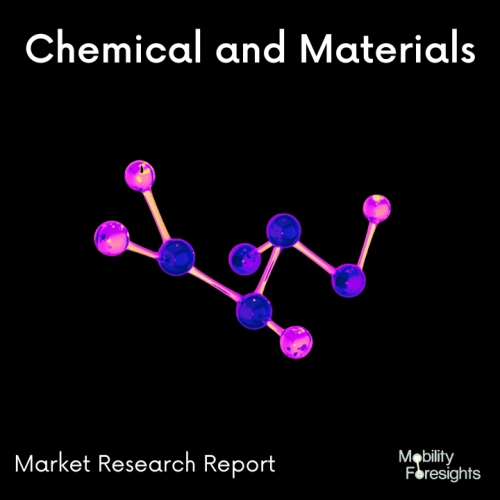
- Get in Touch with Us

Last Updated: Apr 25, 2025 | Study Period: 2024-2030
A polyester resin known as PEN, or polyethylene naphthalene dicarboxylate, has just lately entered the market. Naphthalene dicarboxylate or its derivative, naphthalene-dicarboxylic acid, is poly-condensed with ethylene glycol using a catalyst at the right circumstances to produce PEN.
Whether an ester or an acid derivative is being employed determines the production process. Producers then melt the resin into the appropriate form, which is typically a film for use in post-production, once it has been created through condensation polymerization.
PEN has chemical and physical characteristics that make it perfect for applications with plastic. PEN has various uses, including but not limited to high performance fibres and films used in packaging, as its commercial acceptance rises and it is made easier to produce.
Commercially, polyethylene naphthalene is valued for a variety of qualities. For many packaging applications, its low permeability, increased temperature tolerance, and durability make it particularly beneficial. One of these uses is the bottling of carbonated and non-carbonated beverages.
Due to its capacity to be hot filled and maintain the contents of containers lined with PEN film, it is currently gaining favour. It is also widely employed as a barrier to lessen the permeability of gases, flavours, and vapours into or out of containers in the food packaging sector.
Flexible food packaging often uses PEN films because they strengthen and increase the package's durability. PEN is preferred for sophisticated photography and image applications as well as electrical insulation and barrier applications because of its dielectric insulating capabilities.
Electronics professionals have looked at how PEN can be utilised to create capacitors and storage items like USBs. Electrical circuit boards that nevertheless need to be flexible can be coated with it. Comparing PEN to PET, there are numerous ambiguous or comparable intrinsic features.
The fact that PEN can serve many of the same functions as PET, making it a comparable polymer, is one of the main advantages of adopting it. But utilising PEN, less material is needed to meet the same standards as PET.
The tensile strength, resistance, and permeability of a film made of PEN, for instance, might be identical to those of a film made of PET, but the PEN film would be narrower and thinner.

The Global Cosmetic container Polyethylene Naphthalate (PEN) Resin market accountedfor $XX Billion in 2021 and is anticipated to reach $XX Billion by 2030, registering a CAGR of XX% from 2022 to 2030.
Manufacturers may resort to PEN as they search for a high-quality, economical method of food packaging. PEN offers outstanding product protection for the contents of the film lined containers, from potato chip bags to beer cans.
The ideal polymer for a packaging engineer is a thin, strong, flexible film covering that shields a package's contents from moisture and chemical fumes and vapours. All of these conditions are met by PEN, which is also sufficiently lightweight and aesthetically pleasing to compete with PET.
Based on the crystalline molecular structure produced by properly aligning the substance during creation, PEN also exhibits increased dielectric properties and has a higher glass transition temperature.
Despite having structural similarities to the widely used polyethylene terephthalate, also known as PET, PEN is a little better polymer. When compared to PET, PEN exhibits greater strength, temperature resistance, and superior dimensional stability.
This makes it the perfect material for hot-filling in packaging applications where sterilisation is required, such as for beer or bottled beverages. It is perfect for barrier applications since it is less permeable to oxygen and water vapour.
PEN containers are attractive to those who want to preserve food products longer because of the reduction in oxidation impacts on the products inside.
Because it keeps its barrier qualities even when bent and flexed, PEN is highly prized as a material. This is the reason it is becoming more and more popular in the food packaging sector.
| Sl no | Topic |
| 1 | Market Segmentation |
| 2 | Scope of the report |
| 3 | Abbreviations |
| 4 | Research Methodology |
| 5 | Executive Summary |
| 6 | Introduction |
| 7 | Insights from Industry stakeholders |
| 8 | Cost breakdown of Product by sub-components and average profit margin |
| 9 | Disruptive innovation in the Industry |
| 10 | Technology trends in the Industry |
| 11 | Consumer trends in the industry |
| 12 | Recent Production Milestones |
| 13 | Component Manufacturing in US, EU and China |
| 14 | COVID-19 impact on overall market |
| 15 | COVID-19 impact on Production of components |
| 16 | COVID-19 impact on Point of sale |
| 17 | Market Segmentation, Dynamics and Forecast by Geography, 2024-2030 |
| 18 | Market Segmentation, Dynamics and Forecast by Product Type, 2024-2030 |
| 19 | Market Segmentation, Dynamics and Forecast by Application, 2024-2030 |
| 20 | Market Segmentation, Dynamics and Forecast by End use, 2024-2030 |
| 21 | Product installation rate by OEM, 2023 |
| 22 | Incline/Decline in Average B-2-B selling price in past 5 years |
| 23 | Competition from substitute products |
| 24 | Gross margin and average profitability of suppliers |
| 25 | New product development in past 12 months |
| 26 | M&A in past 12 months |
| 27 | Growth strategy of leading players |
| 28 | Market share of vendors, 2023 |
| 29 | Company Profiles |
| 30 | Unmet needs and opportunity for new suppliers |
| 31 | Conclusion |
| 32 | Appendix |